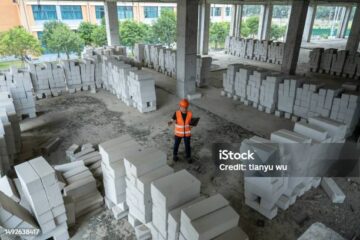In the fast-paced world of an application developer and app development, it’s easy to get completely caught up in the technical intricacies of coding, design, and deployment and the pressures of tight deadlines.
However, amid all of those lines of code, intricate user interfaces and stakeholder demands and expectations lies a crucial element that often determines the success or failure of a project: the human element.
Effective collaboration and communication are the cornerstones of successful app development. They ensure that everyone involved in the project is aligned, informed, and working towards a shared vision.
In this article, we are going to delve deeper into why these soft skills matter, the challenges teams face, and strategies for fostering a collaborative and communicative environment that drives project success.
The Importance of Collaboration and Communication in App Development
App development of any kind, no matter what the development platform is or the app’s intended end use, is rarely a solo endeavour. It requires a diverse team of individuals with specialised skills, including developers, designers, project managers, testers, and stakeholders. Each team member brings a unique perspective and expertise to the table.
Collaboration ensures that these diverse perspectives are harnessed effectively, fostering innovation, creativity, and effective problem-solving. When team members work together seamlessly, they can leverage their collective knowledge to overcome challenges, identify potential roadblocks early on, and create solutions that are greater than the sum of their parts.
Communication, on the other hand, acts as the glue that binds the team together. It enables the free flow of information, ideas, and feedback, ensuring that everyone is on the same page. Effective communication minimises misunderstandings, prevents misalignment, and fosters a sense of trust and transparency within the team.
Challenges to Collaboration and Communication in App Development
While the importance of collaboration and communication is clear, achieving them in practice can be challenging. Some of the common hurdles teams encounter include:
- Remote Work: With the rise of remote work and distributed teams, maintaining strong connections and facilitating real-time communication can be difficult. Virtual collaboration tools can help, but they don’t always replicate the spontaneity and energy of in-person interactions.
- Diverse Skillsets and Perspectives: App development teams comprise individuals with diverse skillsets, backgrounds, and communication styles. Bridging these gaps and establishing a common language can be a challenge, requiring patience, empathy, and a willingness to learn from one another.
- Tight Deadlines and High Pressure: App development projects often operate under tight deadlines and intense pressure to deliver results. This can create a stressful environment that hinders open communication and collaboration, as team members may become focused on their individual tasks rather than the collective goal.
- Evolving Requirements and Scope Creep: It’s common for app requirements to evolve throughout the development process. This can lead to scope creep, misaligned expectations, and frustration among team members if communication is not proactive and transparent.
- Conflicting Priorities: Different stakeholders may have varying priorities and expectations for the app. Balancing these competing needs and ensuring everyone feels their concerns are addressed can be a delicate balancing act that necessitates open communication and compromise.
- Technical Debt and Legacy Systems: Many organisations grapple with legacy systems or accumulate technical debt over time. Integrating new app development with outdated or complex infrastructure can lead to compatibility issues, unexpected delays, and frustration among developers if not proactively addressed through clear communication and careful planning.
Strategies for Fostering Collaboration and Communication
Despite the challenges, there are multiple strategies teams can employ to foster a culture of collaboration and communication:
- Establish Clear Goals and Expectations: From the outset, ensure that everyone on the team understands the project goals, individual roles and responsibilities, and communication protocols. This sets a foundation for clarity and accountability.
- Embrace Agile Methodologies: Agile development frameworks prioritise collaboration, flexibility, and iterative progress. They encourage regular communication, feedback loops, and adaptation to change, keeping the team aligned and the project on track.
- Leverage the Right Tools: Invest in collaboration and communication tools that facilitate seamless interaction, information sharing, and project management. Tools like Slack, Trello, Jira, and video conferencing platforms like Zoom or Skype can help bridge the gaps created by remote work and keep everyone connected.
- Cultivate a Culture of Openness and Trust: Encourage team members to express their ideas, concerns, and feedback without fear of judgement or reprisal. Foster a culture where mistakes are seen as learning opportunities and where everyone feels comfortable sharing their perspectives.
- Celebrate Success and Learn from Failures: Recognize and celebrate team achievements, both big and small. When things don’t go as planned, conduct a blameless post-mortem to analyse what happened, identify lessons learned, and apply those insights to future projects.
- Prioritise Face-to-Face Interaction (When Possible): While remote work has its benefits, in-person interactions can foster stronger relationships, build trust, and spark creativity. If possible, schedule regular team meetings, workshops, or social events to strengthen bonds and facilitate open communication.
- Invest in Team Building and Professional Development: Organise team-building activities to improve communication skills, build rapport, and foster a sense of camaraderie. Encourage continuous learning and provide opportunities for professional development to empower team members and keep their skills sharp.
The Role of An Application Developer in Fostering Collaboration
Leading application development companies like Pixelfield recognize that collaboration is not just an external concern, but a core principle they embody within their own teams and processes.
They understand that building successful applications requires more than just technical skills; it demands a collaborative ecosystem where developers, designers, project managers, and clients work in harmony.
Here’s how they actively contribute to fostering collaboration:
- Client-Centric Communication: A reliable app development company prioritises open and transparent communication with clients. They establish regular touchpoints, provide progress updates, and actively seek feedback throughout the development cycle, ensuring alignment and minimising misunderstandings.
- Internal Team Synergy: Successful development companies cultivate a collaborative culture within their own ranks. They encourage cross-functional collaboration, knowledge sharing, and peer reviews to ensure a cohesive and high-quality product.
- Agile Project Management: Embracing Agile methodologies, they break down projects into manageable sprints, facilitating frequent communication and adaptation to evolving requirements. This ensures the project stays on track and everyone remains aligned with the evolving vision.
- Collaboration Tools and Platforms: Development companies leverage a suite of collaboration tools and platforms to streamline communication and facilitate seamless teamwork, especially with remote or distributed teams. This includes project management software, version control systems, and communication platforms to keep everyone connected and informed.
- Proactive Problem-Solving: They anticipate potential challenges and address them proactively. By maintaining open lines of communication and fostering a collaborative environment, they can quickly identify and resolve issues, preventing them from escalating into major roadblocks.
By actively prioritising and facilitating collaboration, app development companies empower their teams to create exceptional applications that not only meet but exceed client expectations. They recognize that the human element is integral to the success of any software project, and they actively cultivate a culture of collaboration and communication to achieve optimal outcomes.
The Bottom Line
The human side of app development is often overlooked, but is equally important as the technical aspects. Effective collaboration and communication are not just buzzwords but essential ingredients for success. By investing in these soft skills, leveraging the right tools, and embracing a culture of openness and trust, teams can unlock their full potential and deliver exceptional app experiences.




